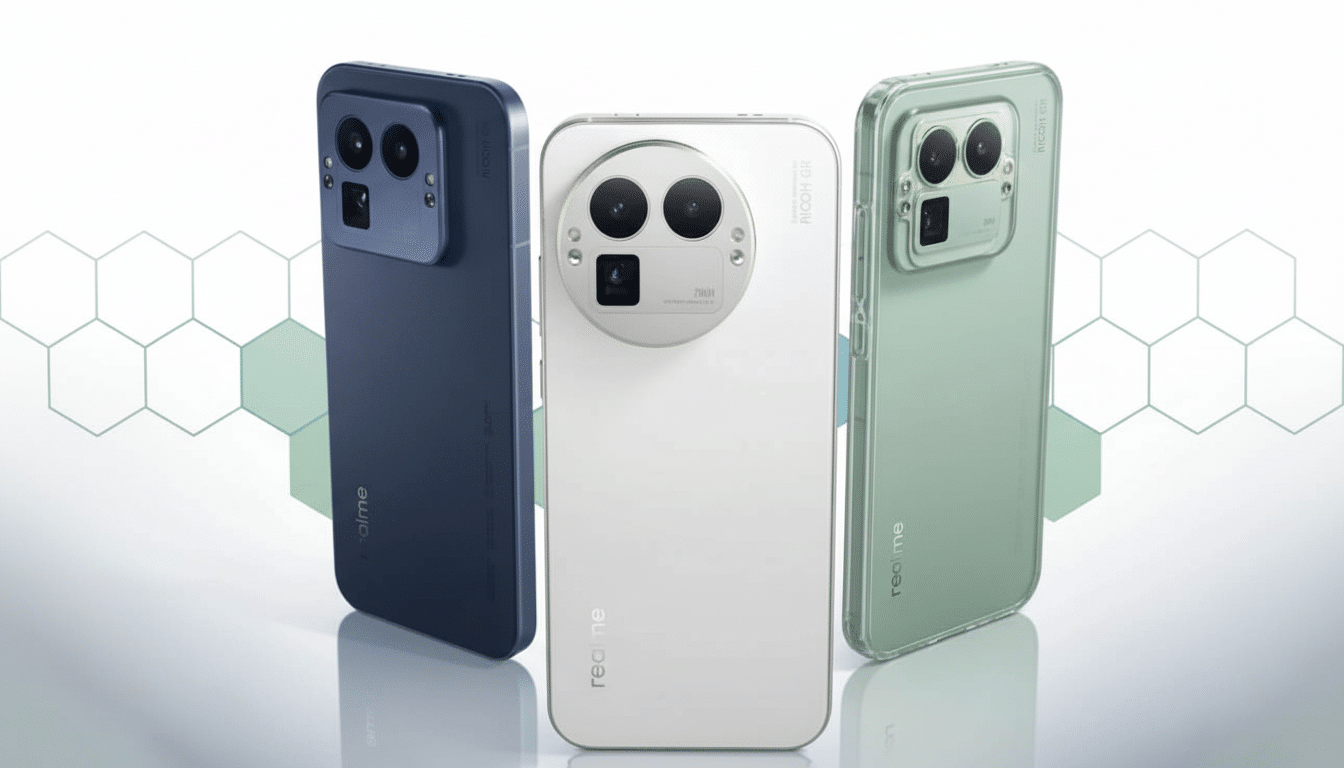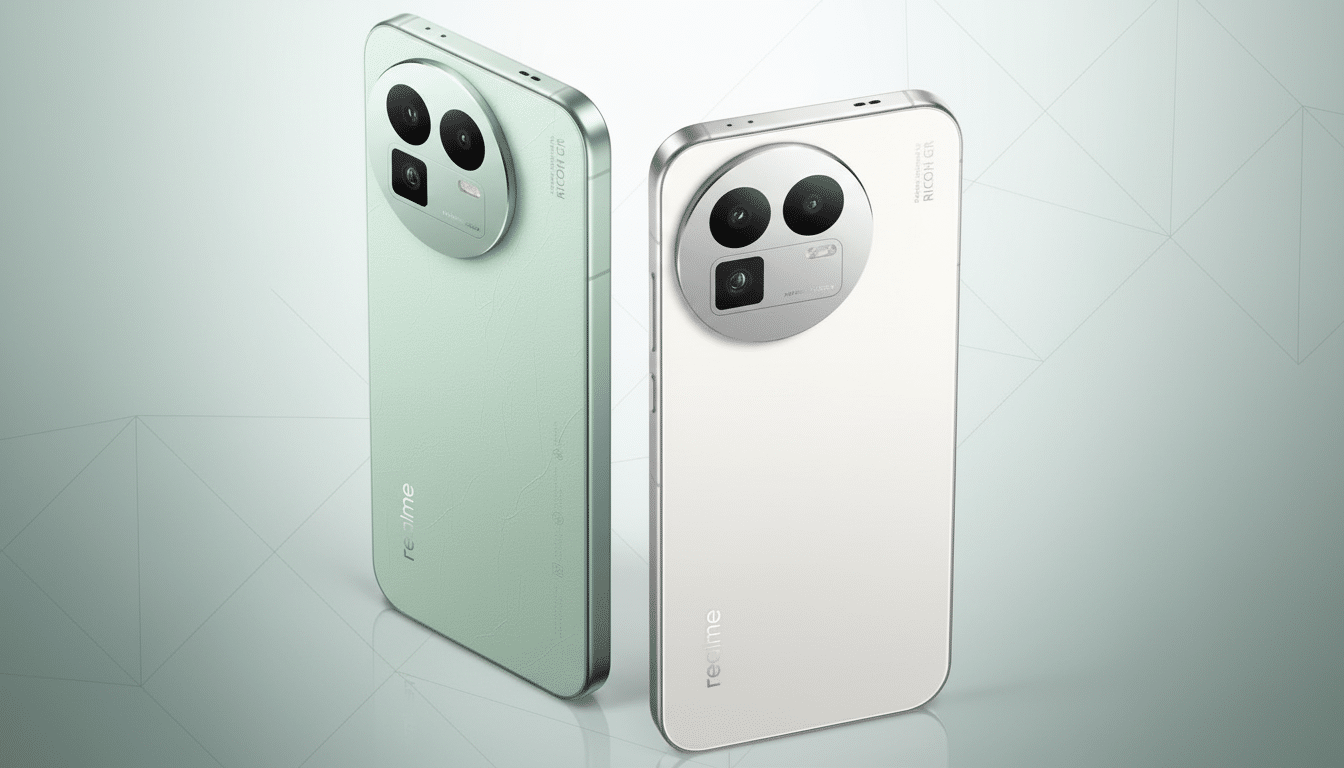Despise the appearance of your phone’s camera bump? The Realme GT 8 Pro that’s on the horizon is teasing a heck of a humble, relatively ballsy fix: Just exchange it for another island of cameras, like you’re playing one of those trading games using decorative plates. On a market filled with glass slabs and familiar shapes, it’s a rare try at meaningful, obvious personalization in a flagship.
A Camera Island You Can Redesign With Swappable Covers
Company teasers published on Weibo feature a removable metal “island” around the rear camera module, which is kept in place by two screws. The default cover is square, though Realme offered us a sneak peek at variants in various shapes and materials such as circular, hexagonal, and transparent, as well as fun patterns. You’re not trading lenses or sensors — the optics and sensors remain fixed — but you can swap out the frame, which is what defines how the camera array looks.

It’s a neat compromise between modular phones and fixed aesthetics. Call it a faceplate for the most visually arresting feature of a modern smartphone, as collections of lenses and rings frequently determine whether a device comes across as refined, aggressive, or just loud.
Why This Sort of Modularity Is Important
Previous efforts at modular phones have sputtered — LG’s G5 “Friends” and Moto Z’s Mods were promising but never created thriving ecosystems. What really separates this is simplicity: no electrical connectors, no software support, and no ecosystem buy-in. It’s a purely cosmetic exchange that sidesteps the mess and price tags that doomed previous attempts.
Personalization is not a niche request. No-contact consumer surveys by firms like Statista or YouGov routinely find that a vast majority of people use cases on their phones, with a growing percentage purchasing skins or decals. But the camera island is usually left exposed or awkwardly cut out of the case. Altering that component directly would lead to designs that feel new without resorting to a full device refresh or clunky case accessories.
There is also brand strategy at work. Realme already has a history of special editions designed with outside creatives — the “Master Edition” line stands out here. A swappable island paves the way for limited runs, artist collaborations, and event tie-ins that don’t require a full hardware overhaul.
Durability And Availability Questions Remain
Anything that moves or can be moved on the exterior is subject to judgment. The first two questions are: how does this impact durability and the IP rating, and where will they sell the accessories? There could be an IP rating, depending on whether it has a rubberized seal under the island; if there isn’t, then dust and spray resistance may not make the cut. The screws also pose practical considerations — will a tool be provided and how might the system guard against overtightening or cosmetic damage?
Distribution is another unknown. Realme generally brings its design-centric accessories to China first, and occasionally on a regional basis. If the company is serious about making this idea last, it needs breadth: multiple styles at launch, reasonable pricing, and a steady cadence of new designs. A healthy third-party scene would definitely help, but tolerances need to be tight in order to maintain a premium fit and finish.

There’s a sustainability angle too. Camera islands are subjected to damage — micro-scratching and pocket grit — and replacing a scuffed plate with a fresh one keeps the “new phone feel” without forcing you to swap out the whole phone. That jibes with the larger right-to-repair train chugging along by advocates like iFixit and policy groups in the EU, even if this feature is more about appearance than function.
Early Specs And A New Camera Partner Announced
Aside from the design twist, Realme characterizes the GT 8 Pro as a serious flagship. The company has hinted at a Snapdragon 8-series flagship platform and has announced its first camera partnership, with tuning by Ricoh. The tie-up is significant: Ricoh’s GR series is beloved for its color and tonal rendering among street photographers, though partnerships involving color science are a proven playbook across the industry, from Leica co-development to Zeiss or Hasselblad plans.
Realme itself suggests that it shares hardware lineage with other premium devices, including a primary sensor seen on rival flagships and a high-resolution telephoto that might top out around 200MP in some models. Charging and battery specs should be the same as those found on peer devices across the wider BBK family, with Android 16-based Realme UI also likely.
What It Means for The Flagship Design in Modern Smartphones
Camera islands are the calling card of modern phones, a billboard on the back for brand identity. The concept of allowing an owner to rebrand that billboard on demand is a little idea with an outsize effect. It pushes premium hardware toward personalization without sacrificing engineering or cost as the battle over full modularity did.
If Realme delivers with quality, range, and wide availability of swappable plates, the precedent it sets could be copied by other manufacturers.
If it shortchanges accessory support or confines the program to a single region, it could just be a neat demo that fizzles once released. Either way, it’s nice to see industrial design move forward in a category that has so often defaulted to safe glass rectangles.

